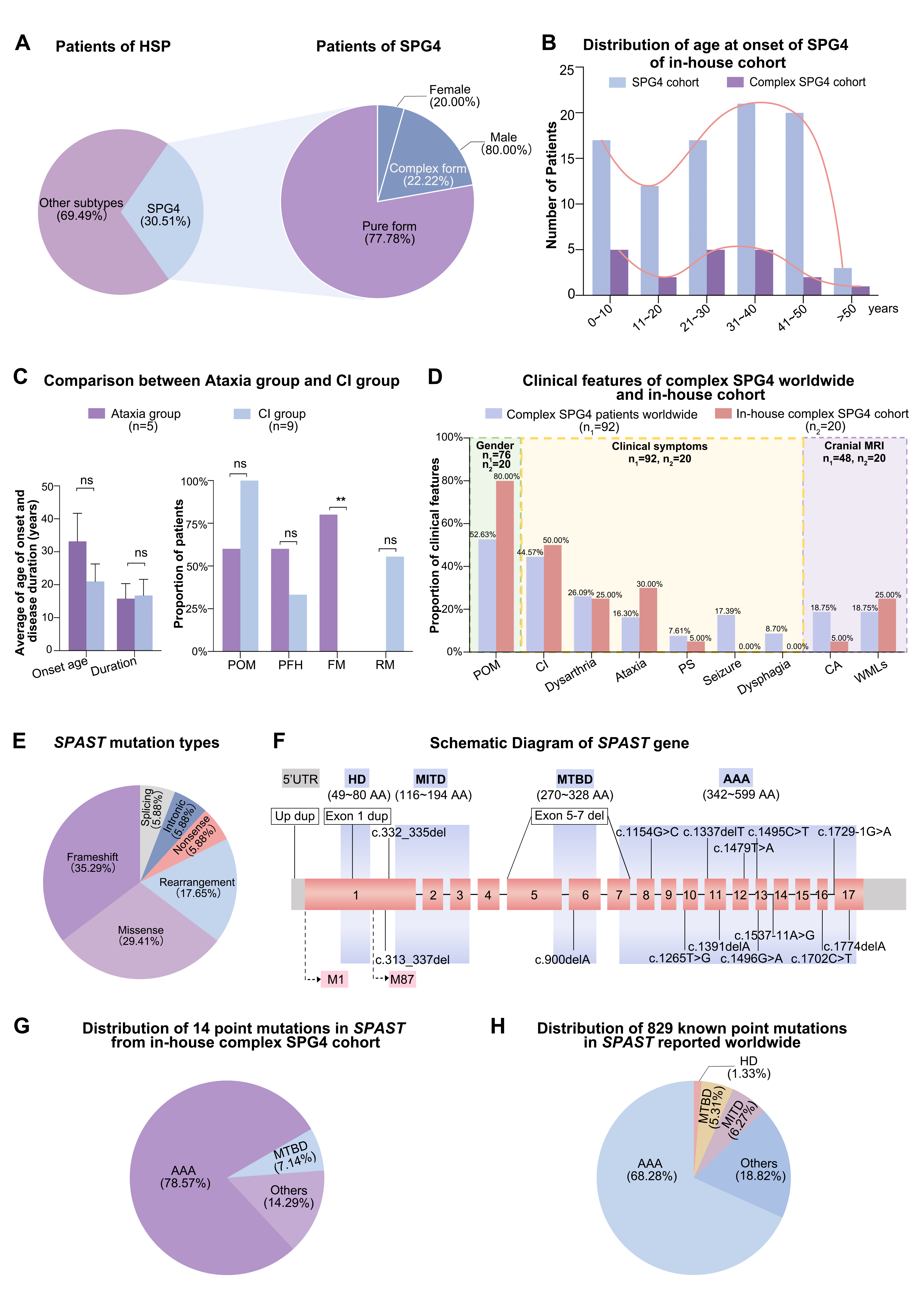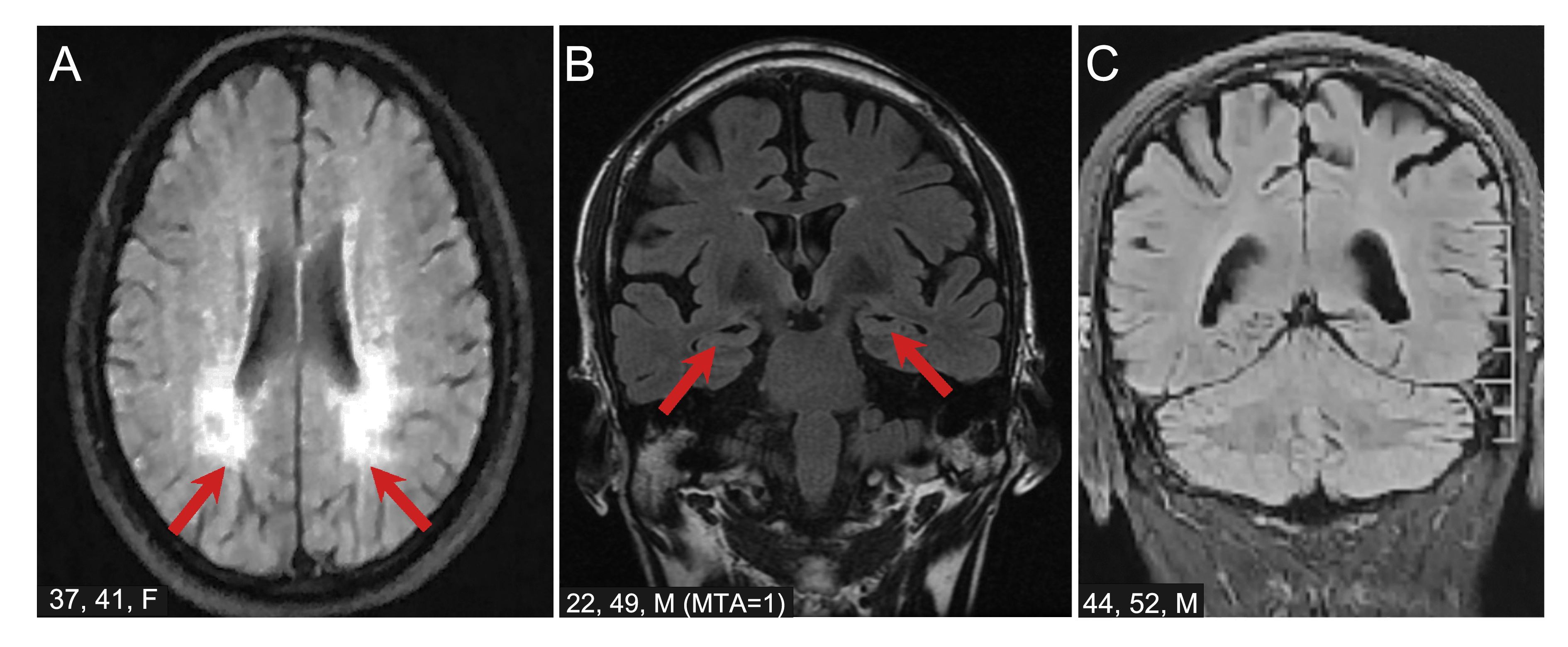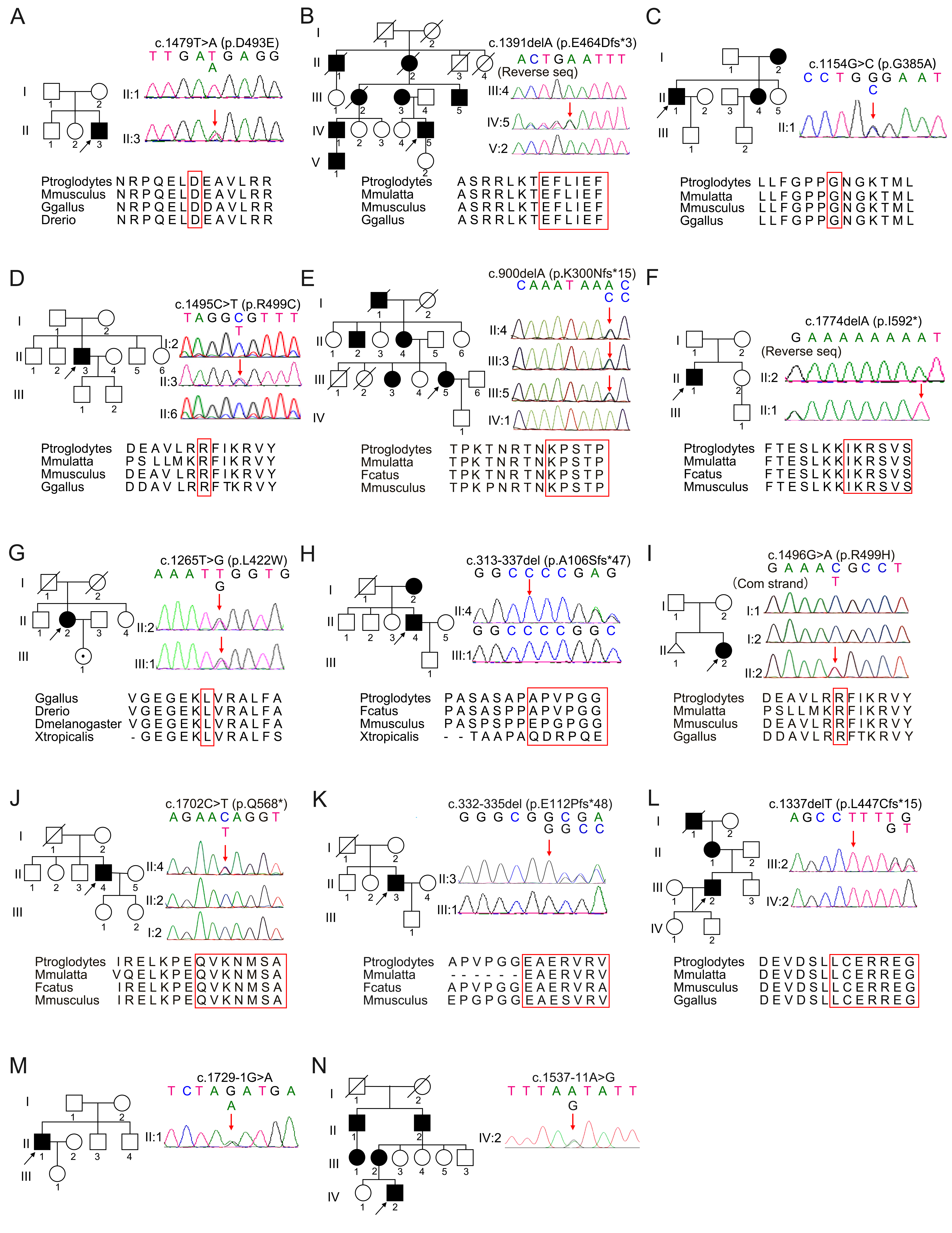Category: Spasticity
Objective: To delineate the genotypic and phenotypic spectrum of patients with complex SPG4 phenotype and further explore genotype-phenotype correlations.
Background: Spastic paraplegia type 4 (SPG4), caused by SPAST mutations, is the most predominant subtype of hereditary spastic paraplegia. Most documented SPG4 patients present as pure form, with the complex form rarely reported.
Method: We collected detailed clinical data of all SPG4 patients and assessed their phenotypes. SPAST gene mutations were identified by Multiplex ligation-dependent probe amplification in combination with whole exome sequencing. We further performed statistical analysis in genotype and phenotype among patients with various manifestations and different variants.
Results: Out of 90 SPG4 patients, 20 patients (male: female=16: 4) with additional neurologic deficits, namely complex form, were included in our study. The bimodal distribution of age of onset at 0~10 and 21~40 years old is concluded. On cranial MRI, obvious white matter lesions can be observed in 5 patients. We identified 9 novel and 8 reported SPAST mutations, of which 11 mutations were located in AAA (ATPase associated with various cellular activities) domain. All patients with cognitive impairment (CI) are males (n=9/9). Additionally, 80% patients with ataxia are due to frameshift mutations(n=4/5).
Conclusion: Our study summarized and analyzed the genetic and phenotypic characteristics of complex SPG4, making up over 1/5 of in-house SPG4 cohort, among which CI and ataxia are the most common features. The AAA cassette of spastin is the hottest mutated region among complex SPG4. Patients with different SPAST mutation types tend to exhibit distinguished clinical features, which deserve in-depth studies exploring the underlying mechanisms in the future.
Clinical and genetic spectrum of 20 patients
Brain MRI of patients with complex SPG4.
Pedigree of families with point mutations
References: None.
To cite this abstract in AMA style:
L. Yao, YW. Cao, C. Zhang, XJ. Huang, WT. Tian, L. Cao. Clinical and Genetic Characteristics in a Chinese Cohort of Complex Spastic Paraplegia Type 4 [abstract]. Mov Disord. 2024; 39 (suppl 1). https://www.mdsabstracts.org/abstract/clinical-and-genetic-characteristics-in-a-chinese-cohort-of-complex-spastic-paraplegia-type-4/. Accessed April 1, 2025.« Back to 2024 International Congress
MDS Abstracts - https://www.mdsabstracts.org/abstract/clinical-and-genetic-characteristics-in-a-chinese-cohort-of-complex-spastic-paraplegia-type-4/



